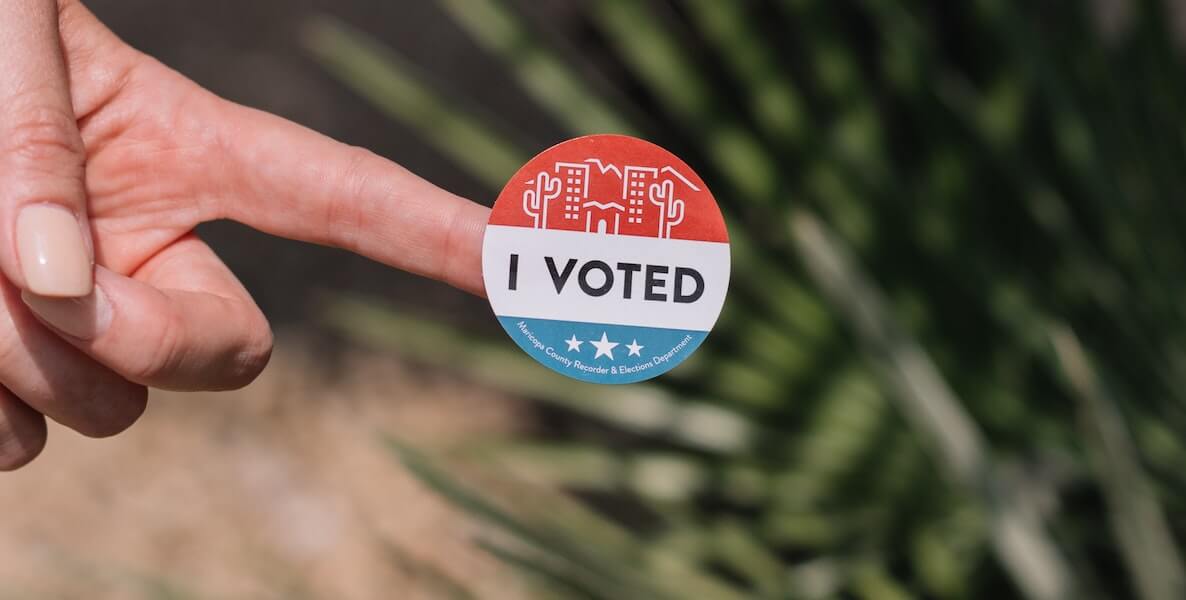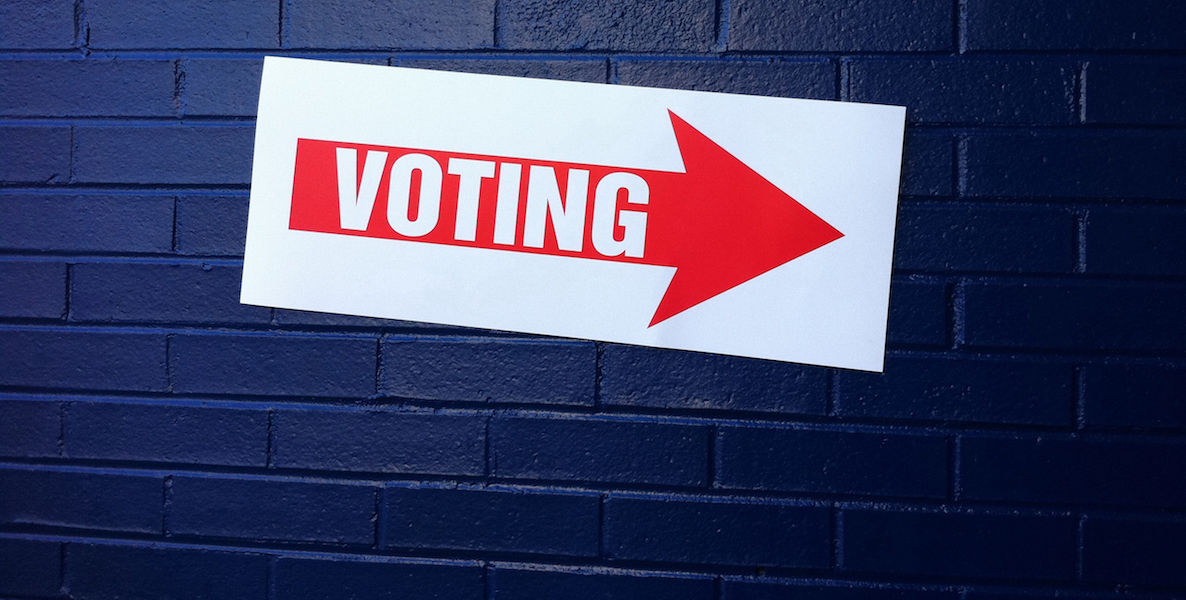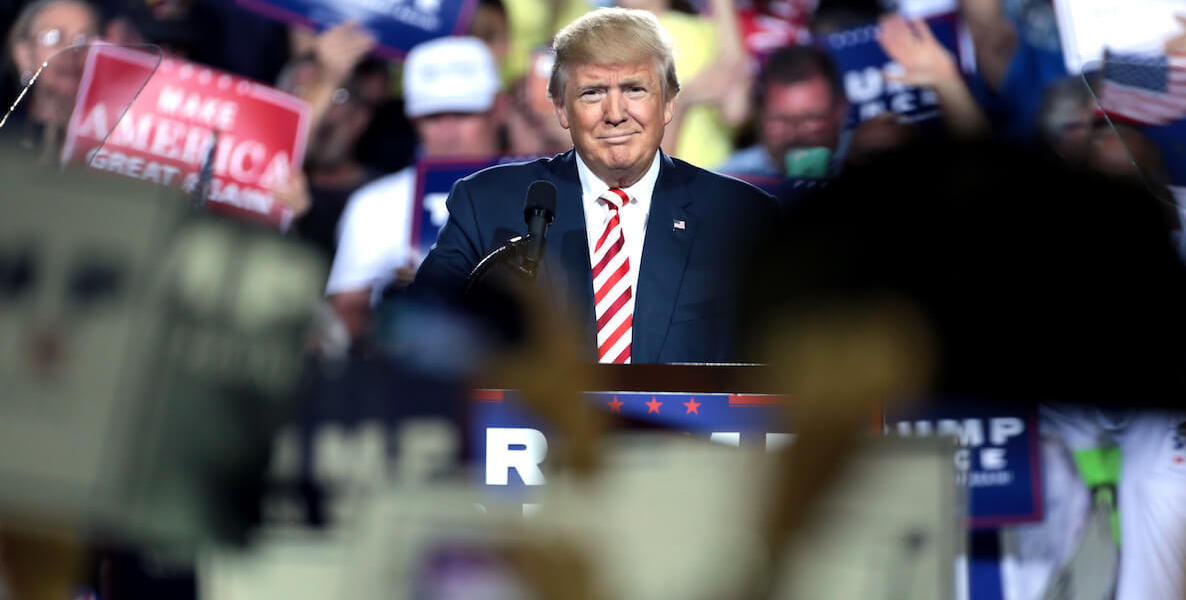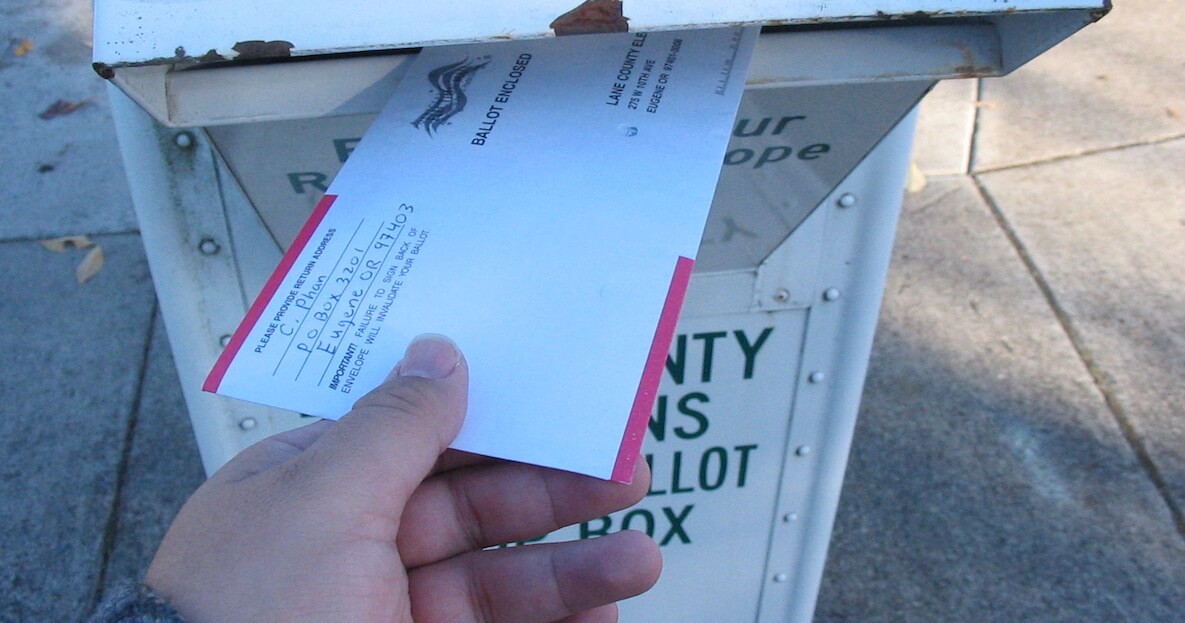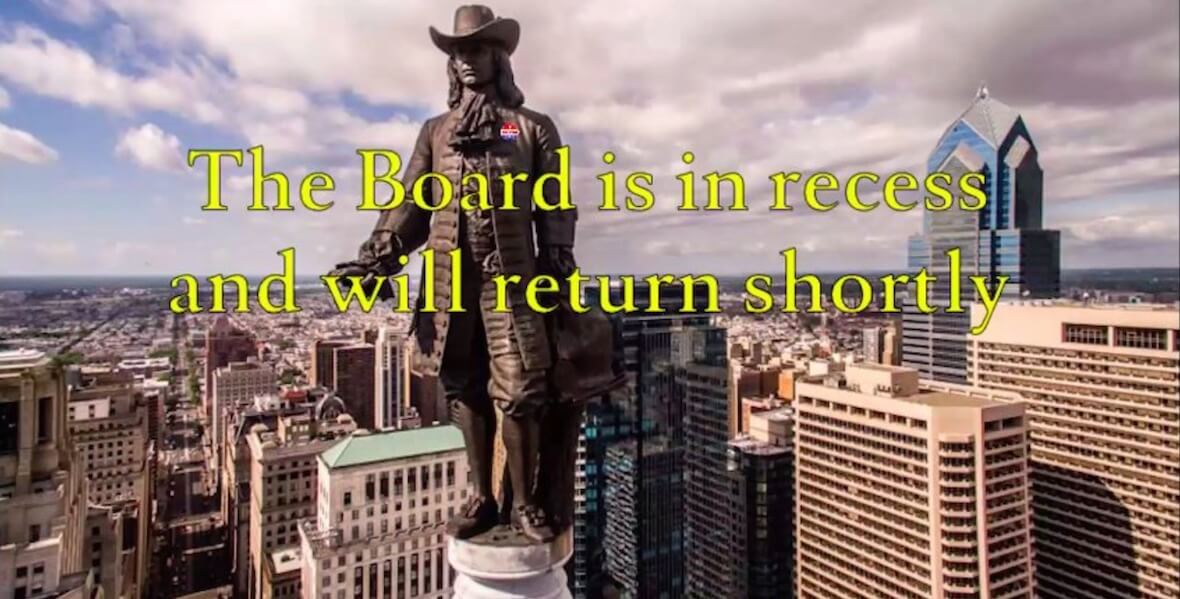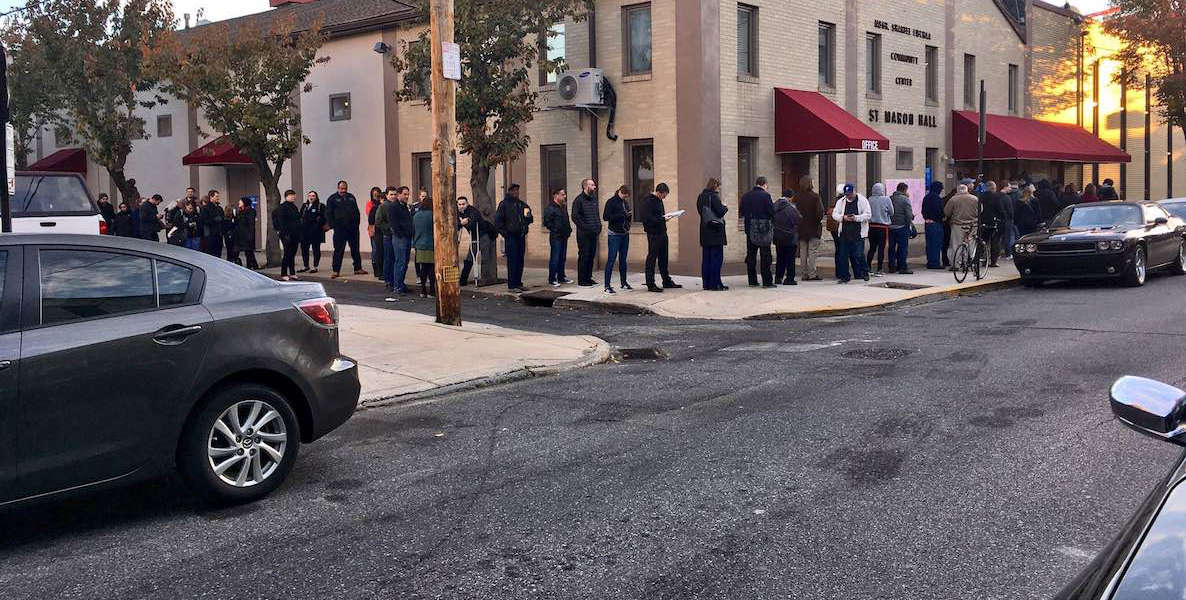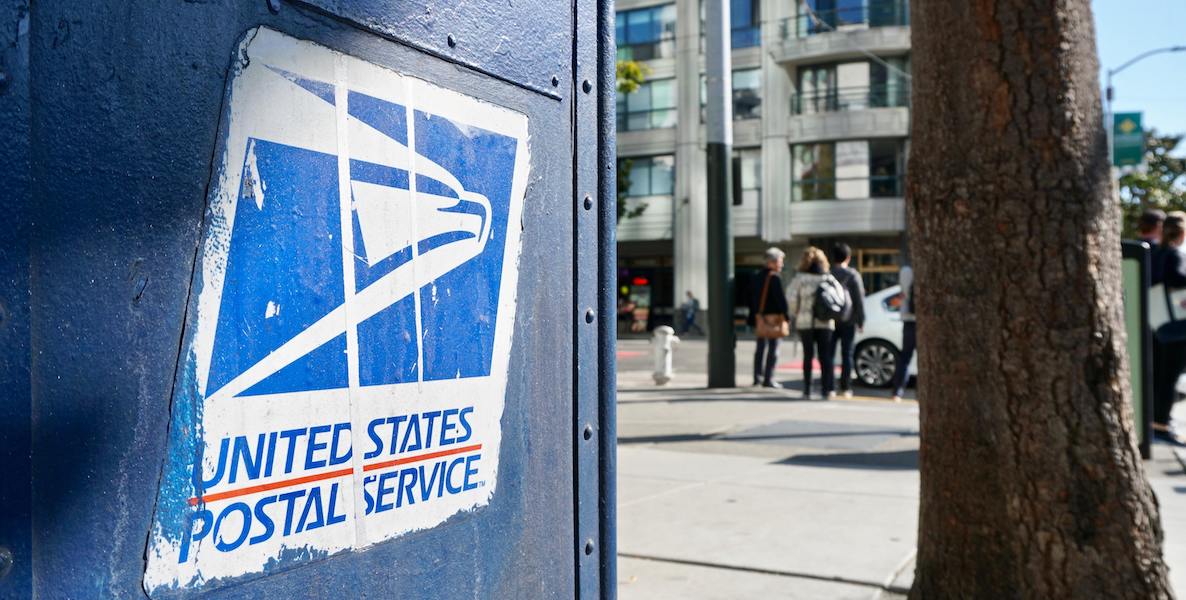![]() Alan Kessler laughed this week when I called to say that all this talk about the Postal Service had me thinking about him.
Alan Kessler laughed this week when I called to say that all this talk about the Postal Service had me thinking about him.
Kessler—a high-powered Philly litigator and a connected political fundraiser who has long bundled large sums for the likes of Ed Rendell, the Clintons and Al Gore—served on the U.S. Postal Service board of governors for 11 years, starting in 2000, after being appointed late in Bill Clinton’s second term. In 2008 and 2009, he served as Board Chair.
So…why the laughter? “It’s funny; it’s such an overlooked agency, in over a decade on the Board, I had maybe three conversations about it,” Kessler says. “Well, yours is the third media call I’ve gotten on it, just this morning.”
![]() He’s right; the Postal Service has rarely been front and center in our political zeitgeist, despite the fact that, upon its founding, the nation’s fathers deemed it essential to a functioning Democracy—for a time, even requiring it to deliver newspapers to citizens.
He’s right; the Postal Service has rarely been front and center in our political zeitgeist, despite the fact that, upon its founding, the nation’s fathers deemed it essential to a functioning Democracy—for a time, even requiring it to deliver newspapers to citizens.
Today, most of us get our mail and think nothing of the bureaucratic behemoth behind it. And a behemoth it is, generating about $76 billion in annual sales—more than FedEx or UPS. But it loses billions of dollars a year, including $2 billion in the most recently closed fiscal quarter.
How the Postal Service Got to This Place
We’ll get to some of the reasons why, because they inform the current controversy. But first, let’s take a step back.
Yes, there’s a tsunami of media and political hyperventilating about Donald Trump’s war on the Postal Service, in part because of the president’s addiction to saying the quiet part aloud. For someone who has told nearly 20,000 lies as president, Donald Trump is pathologically honest when it comes to the motivations behind his diabolically self-centered maneuverings.
So let’s take Trump at his word. He would like to use the power of his office to impede mail-in voting and thereby increase his chances of winning reelection. He’s said as much. But now let’s go back and look at how the Postal Service got to this place, and the narrative that emerges is far more complex than just Trump malfeasance.
Behind all the blaring headlines, l’affaire Postal Service is a story about how short-sighted politics, shoddy media coverage and civic ignorance all collide to sow confusion in the public square.
Yes, this is yet another story that illustrates how adept Trump is at running roughshod over bipartisan norms. But, really, behind all the blaring headlines, l’affaire Postal Service is a story about how short-sighted politics, shoddy media coverage and civic ignorance all collide to sow confusion in the public square.
Let’s walk through the background.
The U.S. Postal Service was a branch of the federal government—the postmaster general had a seat in the president’s cabinet—until the 1970s, when it adopted its current hybrid, public-private model. It is run by a nine-person Board, appointed by the president and confirmed by the Senate, that, like any private Board, approves capital investments; establishes long-term strategies; sets mail prices (with the approval of the Postal Rate Commission); and—critically—strikes labor agreements with a workforce that consists of seven different unions.
The Postal Service is not funded by the federal government. Given its history of precarious finances, it has received loans from the Treasury Department, but it relies on postage rates to be self-sustaining. That hasn’t worked out too well in the internet age. The advent of email and the rise of competition from the likes of FedEx and UPS have resulted in a string of fiscal crises.
Add to that the fact that, in 2006, Congress, in its short-sighted wisdom, mandated that the Postal Service pre-fund its health care obligations, to the tune of putting aside some $11 billion a year. To be clear: This is something private companies have to do when it comes to pension obligations, so companies can continue to pay retirees even when the business goes under. But corporate health care benefits are paid as they are incurred—everywhere, that is, but in the highly unionized Postal Service.
“In my nearly 12 years on the Board, I can’t remember a year without a loss of at least $2 or $3 billion,” Kessler says. “We were always competing with one hand tied behind our back. FedEx could say, ‘We won’t deliver to the base of the Grand Canyon, unless you pay a premium.’ Well, the Postal Service has to deliver everywhere. When we tried to do things that would make us competitive, we’d get shot down by Congress. We looked at selling advertising on Postal [Service] trucks and buildings, and that went nowhere. Ending Saturday delivery would have saved $3.5 billion, but that was blocked by Senator Susan Collins, because Maine had companies that were in the catalogue business and they were dependent on Saturday delivery.”
Here’s the tough part about the “Trump’s War on the Post Office” scandal as it is currently blaring out on cable TV. It’s entirely possible that Louis DeJoy, the Trump donor turned postmaster general, may have been seeking to aid Trump’s political fortunes with some of the moves he’s now backing away from, in advance of his testimony before the Senate. But that’s not at all clear, especially given that he’s only been in his position since June and some of the most troubling policies—like the removal of mail-sorting machines—pre-date his arrival. But at least some of the steps taken by DeJoy and the board of governors to rein in costs—does Laguna Beach, California, really need three post offices?—are necessary in trying to right the ship of a tanker that loses billions of dollars a year.
“Moving some of that mail-sorting equipment out, I have no idea what that’s about,” Kessler says. “But cutting overtime in an organization with such serious fiscal issues? Anyone leading a business that’s losing billions of dollars would be doing that.”
![]() But, in the media narrative, Trump’s rhetoric colors every move the postmaster general or board of governors makes. So when highly respected Deputy Postmaster General David C. Williams resigned in May, reportedly in protest over some of these very changes, it was a signal to some that, as with so many other aspects of the federal government—Ukrainian policy comes to mind—the president was highjacking governance for his personal benefit.
But, in the media narrative, Trump’s rhetoric colors every move the postmaster general or board of governors makes. So when highly respected Deputy Postmaster General David C. Williams resigned in May, reportedly in protest over some of these very changes, it was a signal to some that, as with so many other aspects of the federal government—Ukrainian policy comes to mind—the president was highjacking governance for his personal benefit.
That’s why former Board members, like George W. Bush-appointed Carolyn Lewis, blasted DeJoy this week in the Texas Tribune, pointing out that the Board and DeJoy “are very new and have none of the institutional knowledge that is usually there…Yet they seem to be rushing ahead to make changes before having time to fully understand the impact of those changes on all the stakeholders and there are many: employees, mailers, Congress and the American public…I do not know for certain the motivation of the [postmaster general] and the governors, but their actions are certainly inviting questions, and legitimately so.”
The Real Predicate for Today’s Imbroglio
Kessler cautions me about throwing the word “reform” around when talking about the Postal Service, because that has long been code for privatizing the agency; politically, that’s a non-starter for Democrats who depend upon union support, and, by introducing the vicissitudes of marketplace pricing to our mail system, privatizing the postal system would introduce a hierarchy of winners and losers based on geography to what has always been an egalitarian system.
But when a unionized entity consistently loses billions of dollars, some talk about privatization is inevitable. That fault line gets us to the real predicate for today’s imbroglio.
“In my nearly 12 years on the Board, I can’t remember a year without a loss of at least $2 or $3 billion,” Kessler says. “We were always competing with one hand tied behind our back.”
In 2014, amid falling revenues and calls for cuts—closing branches, looking again at ending Saturday delivery—President Obama put forth a slate of candidates for the board of governors: three Democrats and two Republicans, in keeping with the longstanding norm that the party that holds the White House gets a majority—five seats—on the Board.
Among Obama’s nominees was the most excellent D. Michael Bennett, an African-American lawyer with real ideas about how to make the Postal Service great again, as profiled by Jason Johnson this week on The Grio. But, of all people, Bernie Sanders, conspiring with Republican Senate Majority Leader Mitch McConnell, blocked all five Obama nominees, for fear that the two Republicans would support privatization, and effectively froze any subsequent nominations.
And so the Board withered and died, as Board member terms expired with no replacements offered up.
By December of 2016—mind you, this is before Trump took office—Sanders’ two-year-old blockade had left the board of governors with no members. Ever since, Trump—who has long mused publicly about upping postal rates to harm his perceived archenemy Jeff Bezos—has methodically remade the Board, with nary a peep of opposition from the Democrats.
Currently, there are two Democrats on the Board and five Trump-appointed Republicans—all of whom, according to this CNBC report have some tie, financial or otherwise, either to Trump or to the president’s Treasury Department.
This in no way is a defense of Donald Trump, who has brazenly committed to using the power of his office to help his political fortunes. But where were Bernie and the Democrats? The last of Trump’s nominees were approved by the Senate 89-0. Turns out, Bernie was tougher on Obama than he was on Trump. Blinded by fealty to union support amid billion-dollar losses, Bernie knee-capped Obama and his African-American board of governors reform nominee D. Michael Bennett, just as Congress pandered by requiring the Postal Service to prepay its health care costs for 75 years, something no other governmental agency is mandated to do.
What Would Reform Look Like?
It’s become something of a mantra from me, I know: reform, not ideology. But there is no question that the Postal Service is in need of serious reform. DeJoy is the first outsider Postmaster General in history and, contrary to what has been floated, as the former CEO of a major logistics company, he is qualified to helm a Postal Service turnaround. His testimony today in the Senate and Monday before the House will no doubt lay out the scope of the problem.
It will be hard for DeJoy to come off as a credible reformer, however, because of what we know about Trump’s cynical motives. So, given that lack of trust and the frenzied media coverage, how do we know that mail-in voting won’t lead to disenfranchisement? How will we know whether our votes will be counted if we drop our ballots into a mailbox?
Kessler says it’s a good sign that, in anticipation of his testimony, DeJoy has signaled a willingness to suspend the reforms that have been most criticized for delaying mail delivery. And former Board member Lewis agrees with former Postal Service regulator Ruth Goldway, who counseled “don’t panic” in The New York Times.
Both say that the key will be whether DeJoy commits to handling all mail-in ballots as first-class, rather than nonprofit-rate mail. If first-class, ballots should take only two or three days to get to election boards, compared to seven to 10 days at the nonprofit rate of postage. “He needs to clarify that it is first-class standards,” Lewis told the Texas Tribune. “If it is not first-class mail standards, that’s not good enough.”
![]() The media story will continue to center on whether Trump is manipulating the Postal Service for his own ends, as the hearings and the lawsuit being led by our own Josh Shapiro will bear out. But we also need some solutions to the systemic problem of the Postal Service, and it just may be that DeJoy’s cost-cutting is more about that than it is about doing Trump’s political bidding. Which begs the question: Are the cost-cutting reforms DeJoy will no doubt lay out the right ones, or are there ways for the Postal Service to actually grow its way to sustainability?
The media story will continue to center on whether Trump is manipulating the Postal Service for his own ends, as the hearings and the lawsuit being led by our own Josh Shapiro will bear out. But we also need some solutions to the systemic problem of the Postal Service, and it just may be that DeJoy’s cost-cutting is more about that than it is about doing Trump’s political bidding. Which begs the question: Are the cost-cutting reforms DeJoy will no doubt lay out the right ones, or are there ways for the Postal Service to actually grow its way to sustainability?
Senator Kirsten Gillibrand, for example, has introduced the Postal Banking Act, which would return the post office to its Great Depression roots, when it offered low-cost banking services to poor families.
Her bill effectively turns the Postal Service’s 30,000-plus locations into nonprofit banks in low-income urban neighborhoods and rural towns, offering low-cost checking and savings accounts and low-interest loans to help cover life’s necessities.
Gillibrand projects $9 billion in Postal Service banking revenue a year. In addition, she would repeal the 2006 law that mandated the pre-funding of those health care costs, something Trump’s own 2018 Postal Task Force identified as the major roadblock between the Postal Service and profitability.
Gillibrand’s bill takes on many sacred cows, established banks and a strong union among them. She has said that her bill is dead on arrival, at least until a new president and newly heavily Democratic Congress gain power.
As Sanders’ 2014 machinations make plain, however, Democrats can impede progress just as enthusiastically as Republicans. But at least Gillibrand’s is a serious proposal that seeks to fix a policy problem.
For all the attention the Postal System is now suddenly getting, we’re still hearing a lot more name-calling than we are policy fixes.
It’s election season in Philadelphia. Are you all set to vote?
- Check your voter registration in PA
- Register to vote in PA
- Find your polling place and other post-registration facts
- Request a mail-in ballots for the 2020 election
- Check out who’s running and what are the ballot questions
Header photo by Tariq Ismail / Unsplash


